-
 Bitcoin
Bitcoin $117800
-0.93% -
 Ethereum
Ethereum $3595
-3.74% -
 XRP
XRP $3.255
-7.56% -
 Tether USDt
Tether USDt $1.000
0.00% -
 BNB
BNB $769.8
-0.05% -
 Solana
Solana $190.0
-6.65% -
 USDC
USDC $0.9999
0.01% -
 Dogecoin
Dogecoin $0.2449
-8.56% -
 TRON
TRON $0.3107
-1.02% -
 Cardano
Cardano $0.8207
-7.05% -
 Hyperliquid
Hyperliquid $42.90
-3.57% -
 Stellar
Stellar $0.4320
-7.31% -
 Sui
Sui $3.746
-4.91% -
 Chainlink
Chainlink $18.13
-6.70% -
 Hedera
Hedera $0.2495
-8.65% -
 Bitcoin Cash
Bitcoin Cash $510.6
-2.01% -
 Avalanche
Avalanche $23.94
-3.95% -
 Litecoin
Litecoin $113.6
-2.15% -
 Shiba Inu
Shiba Inu $0.00001405
-7.72% -
 UNUS SED LEO
UNUS SED LEO $8.967
-0.02% -
 Toncoin
Toncoin $3.165
-9.97% -
 Polkadot
Polkadot $4.180
-5.51% -
 Ethena USDe
Ethena USDe $1.001
-0.01% -
 Uniswap
Uniswap $10.07
-4.95% -
 Monero
Monero $320.9
-1.30% -
 Pepe
Pepe $0.00001299
-6.17% -
 Bitget Token
Bitget Token $4.648
-3.05% -
 Dai
Dai $0.9999
0.01% -
 Aave
Aave $290.4
-5.24% -
 Bittensor
Bittensor $432.1
-3.82%
How to combine the Chaos Theory's pattern structure to predict the opportunity of small-level to large-level?
Chaos Theory's application in crypto trading helps predict market movements by identifying patterns at both small and large scales, enhancing trading opportunities.
Jun 01, 2025 at 07:56 pm
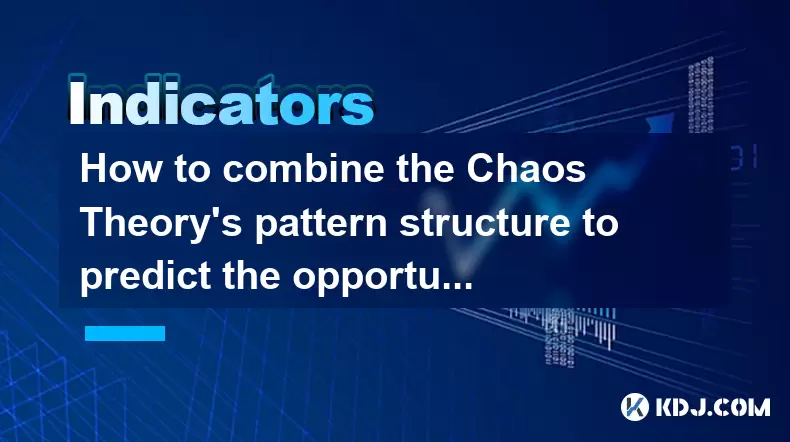
The integration of Chaos Theory's pattern structure into the realm of cryptocurrency trading offers an intriguing approach to predicting market movements from small-level to large-level opportunities. Chaos Theory, traditionally applied in various scientific fields, suggests that within the apparent randomness of chaotic systems, there are underlying patterns and deterministic behavior. In the context of cryptocurrency, these patterns can be utilized to identify potential trading opportunities at different scales.
Understanding Chaos Theory in Cryptocurrency
Chaos Theory provides a framework for understanding complex systems that appear to be disordered but actually follow hidden patterns. In cryptocurrency markets, these patterns can manifest as price movements, volume changes, and other market indicators. By applying Chaos Theory, traders can attempt to predict future market behavior by identifying these underlying patterns.
The core idea is that small changes in initial conditions can lead to significantly different outcomes, a phenomenon known as the "butterfly effect." In the cryptocurrency market, this could mean that small, seemingly insignificant events can lead to large-scale market movements. Traders can use this concept to monitor small-level changes and predict their potential impact on larger market trends.
Identifying Patterns with Chaos Theory
To effectively use Chaos Theory in cryptocurrency trading, it's essential to identify the patterns that emerge from the market's chaotic behavior. This involves analyzing historical data to find recurring structures and trends. Tools such as technical analysis indicators, fractal analysis, and Lyapunov exponents can be used to detect these patterns.
- Technical Analysis Indicators: These include moving averages, relative strength index (RSI), and Bollinger Bands. They help traders identify trends and potential reversal points by analyzing price movements and volume.
- Fractal Analysis: Fractals are geometric patterns that repeat at different scales. In cryptocurrency trading, fractal analysis can help identify self-similar patterns in price charts, which can indicate potential future movements.
- Lyapunov Exponents: These measure the rate of divergence of initially close trajectories in a dynamical system. In the context of cryptocurrency, Lyapunov exponents can help quantify the sensitivity of the market to initial conditions, providing insights into the potential for large-scale movements.
Applying Chaos Theory to Small-Level Opportunities
Small-level opportunities in cryptocurrency trading often involve short-term price movements and quick trades. By applying Chaos Theory, traders can identify these opportunities by focusing on short-term patterns and micro-trends.
- Short-Term Patterns: These are the immediate price movements that occur over minutes or hours. By analyzing these patterns using technical indicators and fractal analysis, traders can predict short-term price changes and capitalize on them.
- Micro-Trends: These are small trends within larger trends. By identifying micro-trends, traders can enter and exit trades at optimal points, maximizing their profits from small-level opportunities.
To apply Chaos Theory to small-level opportunities, traders should follow these steps:
- Collect Data: Gather historical price data and volume information for the cryptocurrency in question.
- Analyze Patterns: Use technical indicators and fractal analysis to identify recurring patterns in the data.
- Monitor Initial Conditions: Pay close attention to small changes in market conditions, as these can have significant impacts on short-term price movements.
- Execute Trades: Based on the identified patterns and initial conditions, execute trades to capitalize on small-level opportunities.
Scaling Up to Large-Level Opportunities
While Chaos Theory can be effective for identifying small-level opportunities, it can also be scaled up to predict large-level market movements. Large-level opportunities involve longer-term trends and more significant price changes. To apply Chaos Theory at this scale, traders need to focus on macro-trends and long-term patterns.
- Macro-Trends: These are the overarching trends that drive the market over weeks, months, or even years. By identifying these trends using Chaos Theory, traders can position themselves for significant profits.
- Long-Term Patterns: These are the recurring patterns that emerge over extended periods. By analyzing these patterns, traders can predict future market movements and capitalize on large-level opportunities.
To apply Chaos Theory to large-level opportunities, traders should follow these steps:
- Analyze Historical Data: Gather and analyze long-term historical data to identify macro-trends and long-term patterns.
- Use Advanced Tools: Employ advanced tools such as Lyapunov exponents and fractal analysis to quantify the potential for large-scale movements.
- Monitor Market Conditions: Keep an eye on broader market conditions, including economic indicators and global events, as these can influence long-term trends.
- Position Trades: Based on the identified trends and patterns, position trades to take advantage of large-level opportunities.
Combining Small-Level and Large-Level Strategies
To maximize the effectiveness of Chaos Theory in cryptocurrency trading, it's crucial to combine strategies for small-level and large-level opportunities. This involves integrating short-term and long-term analyses to create a comprehensive trading approach.
- Integrate Short-Term and Long-Term Analyses: Use short-term patterns and micro-trends to inform immediate trading decisions, while also considering long-term patterns and macro-trends for broader market positioning.
- Adapt to Market Conditions: Be prepared to adapt your trading strategy based on changing market conditions. Chaos Theory suggests that markets are dynamic, and what works in one scenario may not work in another.
- Diversify Trading Approaches: Combine different trading approaches, such as scalping for small-level opportunities and swing trading for large-level opportunities, to spread risk and increase potential returns.
Practical Example of Applying Chaos Theory
To illustrate how Chaos Theory can be applied in practice, consider the following example of a trader using this approach to predict and capitalize on cryptocurrency market movements.
A trader is analyzing the price movements of Bitcoin (BTC) and notices a recurring fractal pattern in the short-term price chart. Using technical indicators, the trader identifies a potential short-term uptrend and decides to enter a long position. Meanwhile, the trader also analyzes long-term historical data and identifies a macro-trend indicating a potential bull run for BTC over the next few months. Based on this analysis, the trader decides to hold the long position for an extended period to capitalize on the large-level opportunity.
In this example, the trader successfully combines small-level and large-level strategies by using Chaos Theory to identify both short-term patterns and long-term trends. This approach allows the trader to maximize profits by taking advantage of opportunities at different scales.
Frequently Asked Questions
Q: Can Chaos Theory be applied to all cryptocurrencies, or are there specific types that are more suitable?
A: Chaos Theory can be applied to any cryptocurrency, but it may be more effective for cryptocurrencies with higher liquidity and more active trading. Cryptocurrencies like Bitcoin and Ethereum, which have large market caps and high trading volumes, tend to exhibit clearer patterns that can be analyzed using Chaos Theory. However, traders should still conduct thorough analysis and consider the specific characteristics of each cryptocurrency when applying Chaos Theory.
Q: How does Chaos Theory differ from traditional technical analysis in predicting cryptocurrency market movements?
A: Chaos Theory and traditional technical analysis both aim to predict market movements, but they approach the task differently. Traditional technical analysis focuses on specific indicators and chart patterns to identify trends and potential reversals. Chaos Theory, on the other hand, looks for underlying patterns and structures within the apparent randomness of the market. While technical analysis can be effective for short-term predictions, Chaos Theory offers a more comprehensive approach that can be applied to both small-level and large-level opportunities.
Q: Are there any tools or software specifically designed for applying Chaos Theory to cryptocurrency trading?
A: While there are no tools specifically designed for applying Chaos Theory to cryptocurrency trading, traders can use a variety of software and platforms that support technical analysis and data analysis. Platforms like TradingView and MetaTrader offer advanced charting tools and indicators that can be used to identify patterns and trends. Additionally, software like MATLAB and Python can be used to perform more complex analyses, such as fractal analysis and Lyapunov exponent calculations.
Q: How can traders manage the risks associated with using Chaos Theory in cryptocurrency trading?
A: Managing risks when using Chaos Theory in cryptocurrency trading involves several strategies. First, traders should always use stop-loss orders to limit potential losses. Second, diversification across different cryptocurrencies and trading strategies can help spread risk. Third, traders should continuously monitor and adapt their strategies based on changing market conditions. Finally, it's essential to conduct thorough research and backtesting before implementing any trading strategy based on Chaos Theory.
Disclaimer:info@kdj.com
The information provided is not trading advice. kdj.com does not assume any responsibility for any investments made based on the information provided in this article. Cryptocurrencies are highly volatile and it is highly recommended that you invest with caution after thorough research!
If you believe that the content used on this website infringes your copyright, please contact us immediately (info@kdj.com) and we will delete it promptly.
- Sui Price, Open Interest, and the $4 Breakout: Will SUI Surge?
- 2025-07-23 22:50:13
- BlockDAG, XRP, and DOT: Riding the Crypto Wave Like a Wall Street Pro
- 2025-07-23 23:10:13
- Dogecoin, Hedera, and PayFi: Altcoins Heating Up in 2025
- 2025-07-23 23:50:12
- NFT Penguins Rally: PENGU's Rise and the CryptoBatz Bounce
- 2025-07-23 23:10:13
- Dogecoin's Future: Will the Meme Dream Live On?
- 2025-07-23 22:30:13
- Mara's Bitcoin Bet: Debt, Mining, and Shadow Banking?
- 2025-07-23 22:30:13
Related knowledge
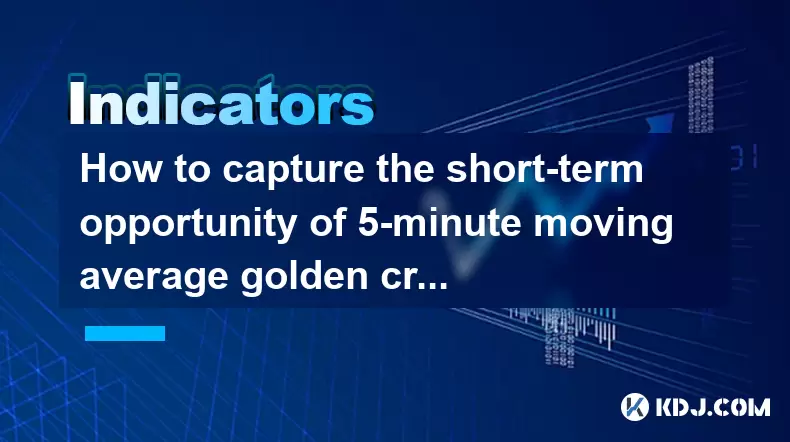
How to capture the short-term opportunity of 5-minute moving average golden cross + 1-minute MACD bar line volume?
Jul 23,2025 at 10:29pm
Understanding the 5-Minute Moving Average Golden CrossThe 5-minute moving average golden cross occurs when a short-term moving average, typically the ...
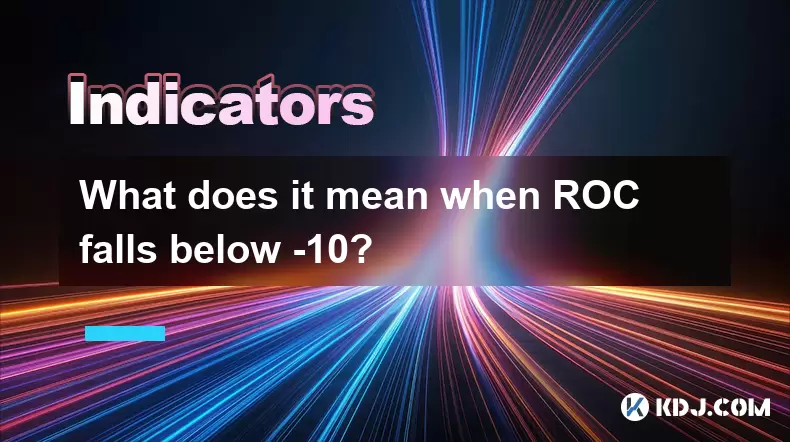
What does it mean when ROC falls below -10?
Jul 23,2025 at 09:29pm
Understanding the Rate of Change (ROC) Indicator in Cryptocurrency TradingThe Rate of Change (ROC) indicator is a momentum oscillator used widely in t...
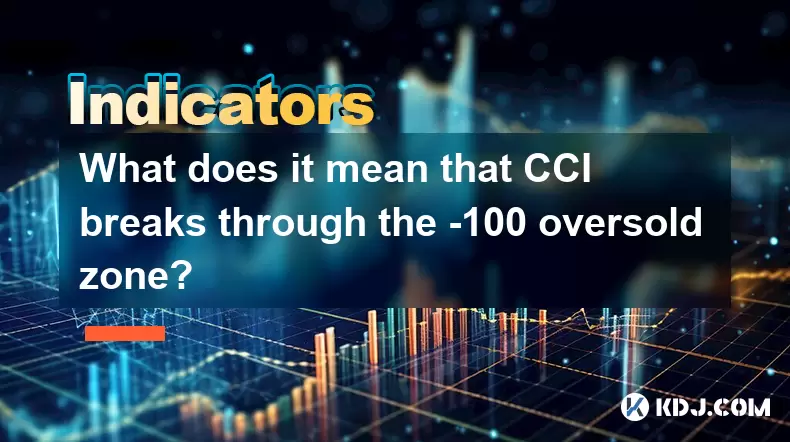
What does it mean that CCI breaks through the -100 oversold zone?
Jul 24,2025 at 01:00am
Understanding the CCI Indicator in Cryptocurrency TradingThe Commodity Channel Index (CCI) is a momentum-based oscillator widely used in cryptocurrenc...
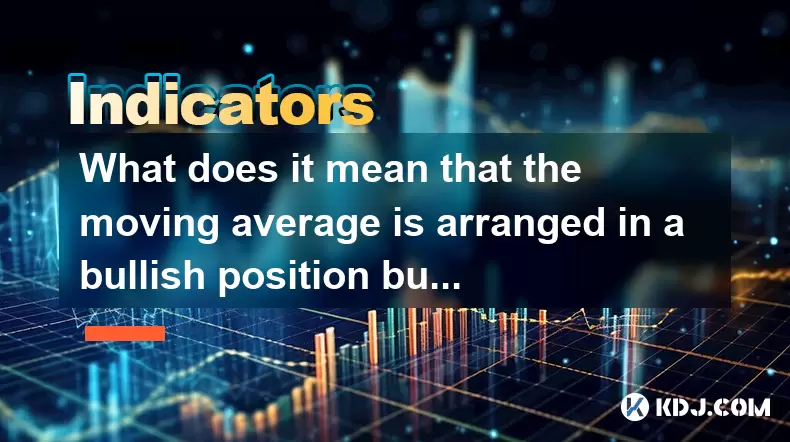
What does it mean that the moving average is arranged in a bullish position but the volume is reduced?
Jul 24,2025 at 12:43am
Understanding the Bullish Moving Average ConfigurationWhen traders refer to a bullish moving average arrangement, they are typically describing a scen...
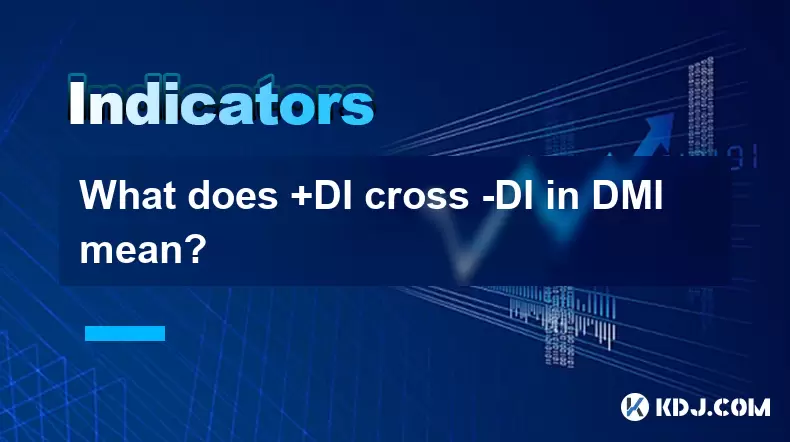
What does +DI cross -DI in DMI mean?
Jul 23,2025 at 09:49pm
Understanding the DMI Indicator ComponentsThe Directional Movement Index (DMI) is a technical analysis tool developed by J. Welles Wilder to assess th...

Advanced RSI strategies for crypto
Jul 13,2025 at 11:01am
Understanding the Basics of RSI in Cryptocurrency TradingThe Relative Strength Index (RSI) is a momentum oscillator used to measure the speed and chan...

How to capture the short-term opportunity of 5-minute moving average golden cross + 1-minute MACD bar line volume?
Jul 23,2025 at 10:29pm
Understanding the 5-Minute Moving Average Golden CrossThe 5-minute moving average golden cross occurs when a short-term moving average, typically the ...

What does it mean when ROC falls below -10?
Jul 23,2025 at 09:29pm
Understanding the Rate of Change (ROC) Indicator in Cryptocurrency TradingThe Rate of Change (ROC) indicator is a momentum oscillator used widely in t...

What does it mean that CCI breaks through the -100 oversold zone?
Jul 24,2025 at 01:00am
Understanding the CCI Indicator in Cryptocurrency TradingThe Commodity Channel Index (CCI) is a momentum-based oscillator widely used in cryptocurrenc...

What does it mean that the moving average is arranged in a bullish position but the volume is reduced?
Jul 24,2025 at 12:43am
Understanding the Bullish Moving Average ConfigurationWhen traders refer to a bullish moving average arrangement, they are typically describing a scen...

What does +DI cross -DI in DMI mean?
Jul 23,2025 at 09:49pm
Understanding the DMI Indicator ComponentsThe Directional Movement Index (DMI) is a technical analysis tool developed by J. Welles Wilder to assess th...

Advanced RSI strategies for crypto
Jul 13,2025 at 11:01am
Understanding the Basics of RSI in Cryptocurrency TradingThe Relative Strength Index (RSI) is a momentum oscillator used to measure the speed and chan...
See all articles

























































































